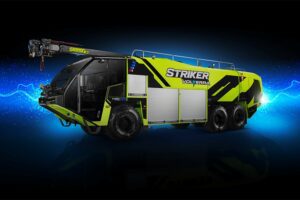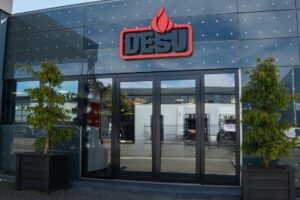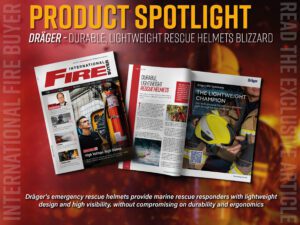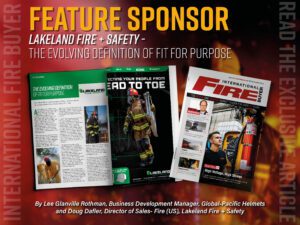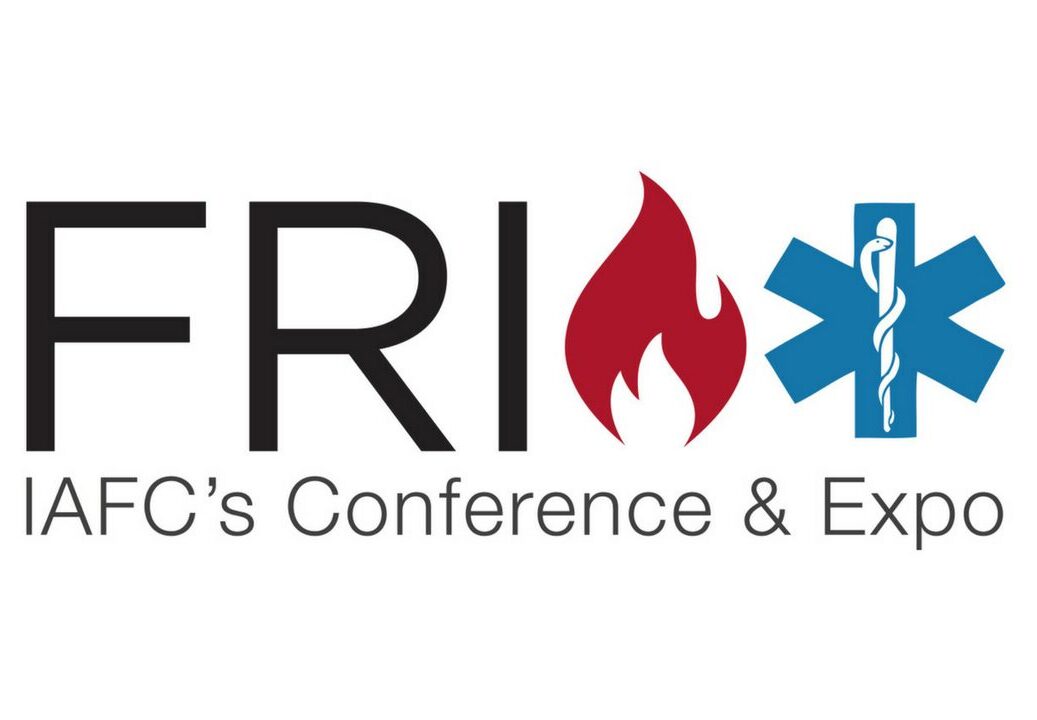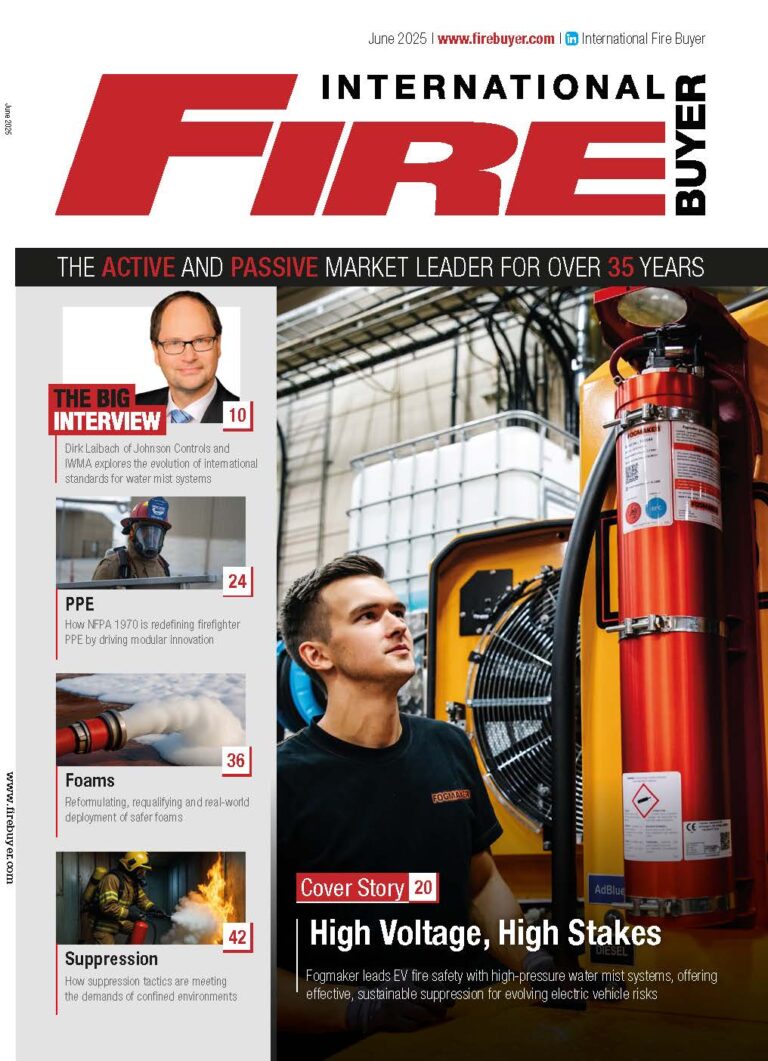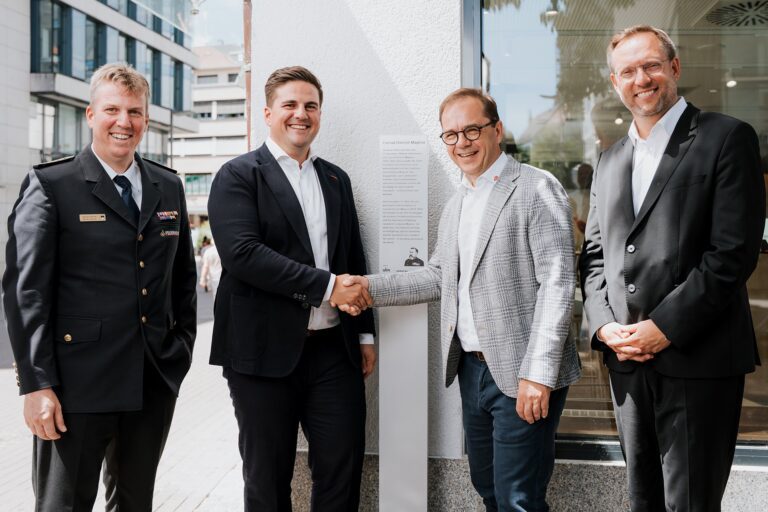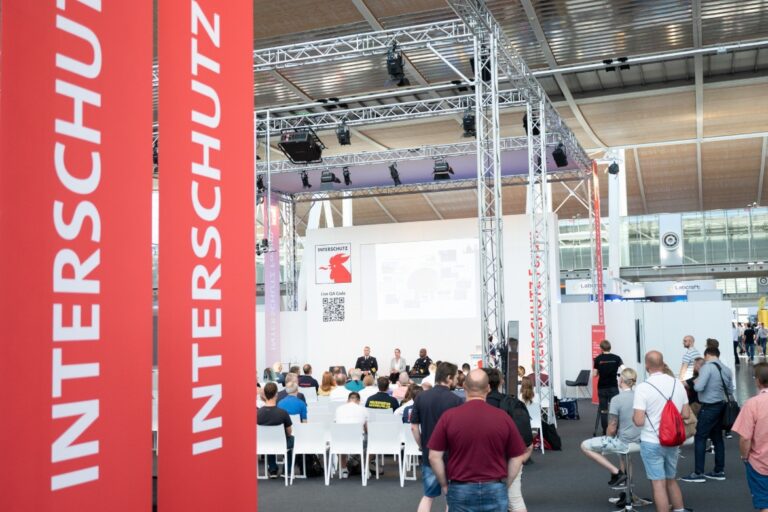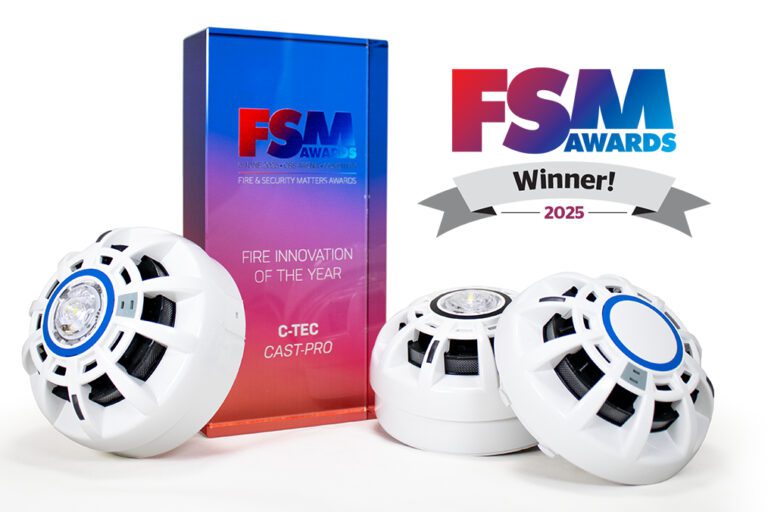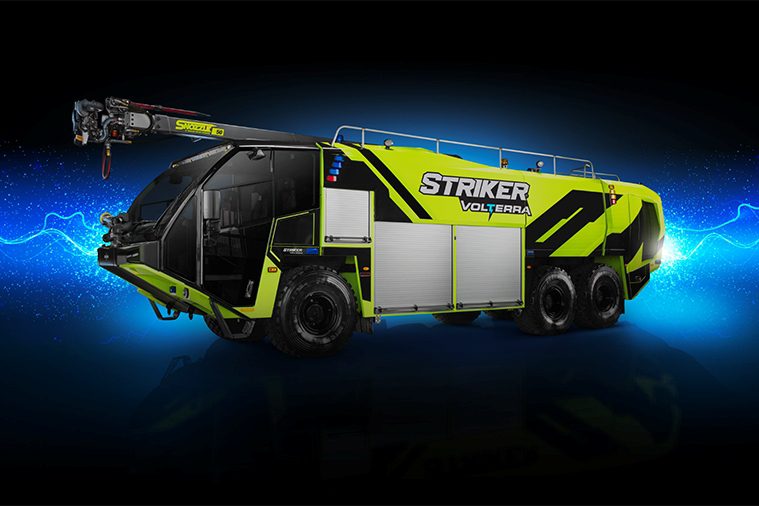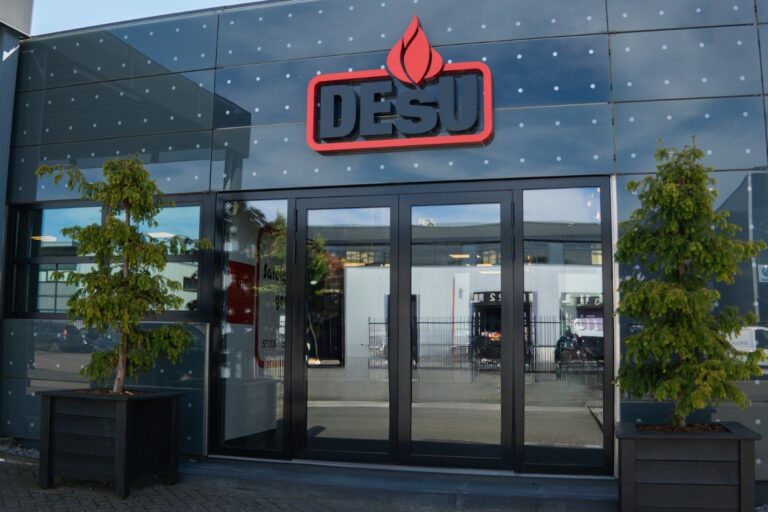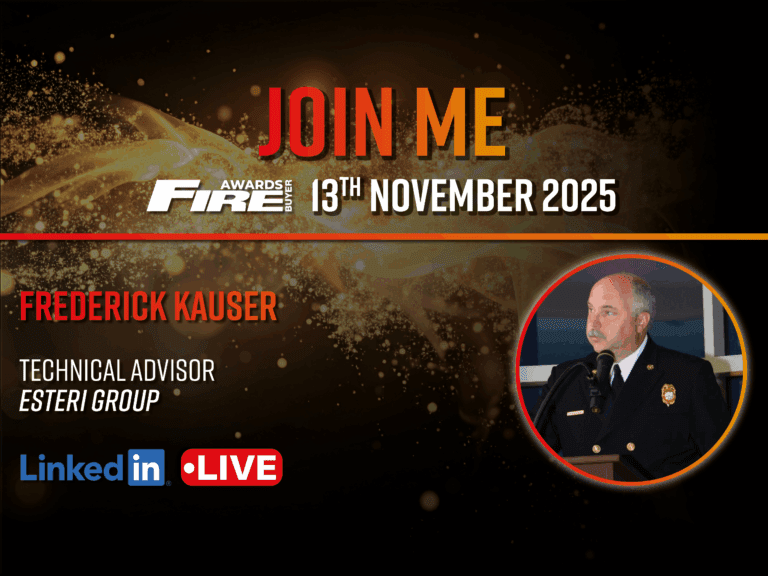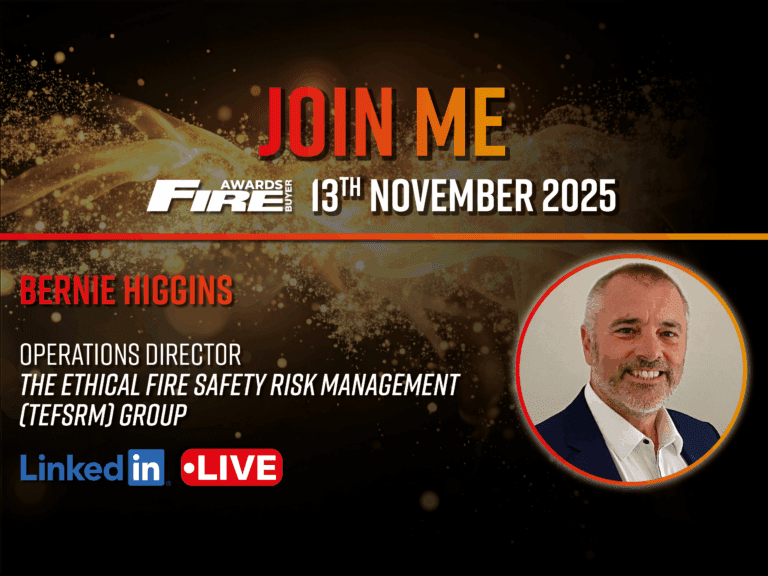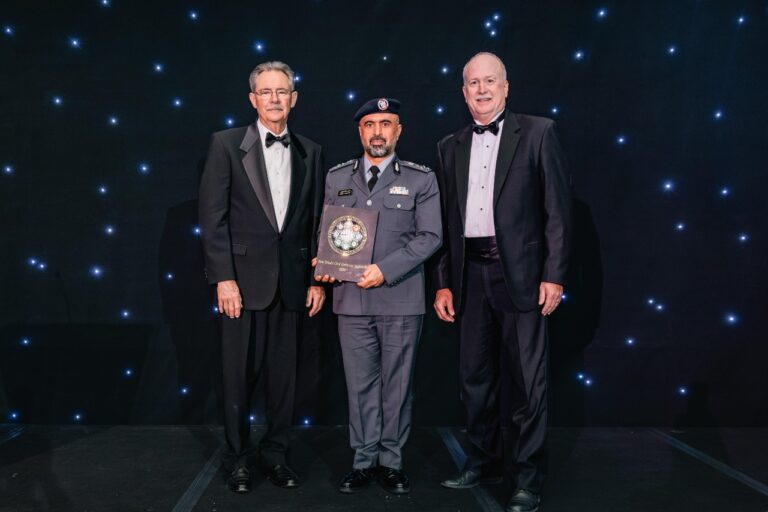Keld Valentin, Global Sales Manager, Fire at Viking Protective Clothing, explains how growing awareness of the cancer risks for fire-fighters is driving the PPE market
Tell us a bit about Viking
Viking is a family-owned company, founded in 1960. We originally come from the marine safety industry – life rafts, evacuation equipment and so on, but in the early 1980s we took over a smaller manufacturer that had worked with us in the past and stepped straight into the PPE business with fire suits and everything that makes Viking what they are today. Today we employ over 2000 people with an annual turnover of over 230 million Euros. We operate on a global scale, with over 70 branch offices around the world. Our fire suits are made in Europe and at our own factory in Thailand. The European market is served from our European factories.
At Interschutz, you launched your new Guardian range. Tell us a bit more about that.
Originally it was a development project initiated by the Gothenburg Fire Department in Sweden, which is one of the most innovative Departments in Europe. They had a need for new suits, but instead of going out in a traditional tender and stating their requirements, they invited manufacturers to help them develop a brand new type of suit. What they required was a suit where the fire-fighter, without any assistance, would be able to take off the outer shell and thereby reduce the immediate exposure to carcinogens and harmfull particles, put the outer shell into a dissolvable washing bag and deliver it directly into the washing machine at the station, thereby also reducing the contamination of his vehicle, the station and the people preparing his laundry. That was the concept.
There has been a lot of discussion around the risks to fire-fighters of carcinogen-based cancers. The fire-fighters themselves have, of course, been following these discussions and have felt the need to take a stand and say ‘there are probably going to be many more discussions before final conclusions are made and new regulations implemented. We need to do something right now that is logical and achievable without compromising protection.’ The logical thing to do is to remove the contamination as early as possible and stop people being unnecessarily exposed to potentially harmful substances.
How serious are the health risks from carcinogens to fire-fighters?
It’s a global concern at the moment; there have been numerous studies into it, both in Europe and, especially, in the US. The international agency for cancer research has classified the fire-fighting profession as being at possible risk from carcinogens, but it is expected that will change to a probable risk. Everybody is aware that there is an escalating situation, and all the investigations to date have compared fire-fighters to the average population, not taking into account that fire-fighters are probably a lot fitter than the average population – something they feel they don’t get enough credit for. Also, the whole work environment for fire-fighters has changed in recent years. As an old fire-fighter once told me, 50 years ago the smoke wasn’t as dangerous as it is now because all that was being emitted in the smoke originated from wood and cotton materials. In a modern home, there are almost no natural materials any more.
Are there certain types of fire that the Guardian suit is best designed for?
Our suits are all designed to meet or exceed all the requirements for structural fire-fighting gear according to either the European EN469 or the American NFPA standards.
Do the different standards prove a hindrance to the development of the suits? Do you think there needs to be more standardisation of the standards?
There are two standards we have to adhere to, of course. In Europe we adhere to the EN:469 standard, and in the US they have the NFPA standard. We have to offer two completely different suits – the requirements are completely different between EN and NFPA.
We know that there is some work into making an all-encompassing ISO standard. This has been talked about for a long time, but the trouble is that there is a lot of different tradition and needs for fire-fighters around the world. There are positives and negatives in each aspect. American suits require higher thermal protection and thus have a higher weight than European ones, but their suits are tested against a lot more things than in Europe. Moisture barriers, for example, are tested in the States for their resistance to viruses and blood-borne pathogens, which isn’t done in Europe. In the US they also have NFPA 1851, which mandates a fire-fighter to hand in their suit once a year for washing and a advanced inspection. In Europe, there is no requirement for periodical inspection or, indeed, washing: You can do what you like.
Do you think that’s something that should be adopted in European standards?
In America, they have a different view on the ageing process of the components of a suit. After ten years, a fire suit has to be condemned because the components it is built out of are not the same as they were when they were new. They have been used in a range of conditions for such a long time that there is no way of knowing what you are wearing unless you test it. The whole discussion about carcinogens and the risk of cancer has created more awareness amongst fire-fighters; however, before anything happens because of it you have to implement a change of attitude in terms of how you handle a suit, how you maintain and repair it. We are seeing that a lot of the organisations and Fire Departments concerned about occupational safety are very interested in these new concepts, as it offers a tangible solution and a best practice. Once you create best practices, the fastest way to implement them is through regulations.
Would you say that the emphasis on suit care should be on the fire-fighters themselves?
No, they are on the frontline and they do push for better solutions, but it has to come from an overall awareness, change in attitude, establishing best practice and introducing regulations. The industry also has to give them a chance to do that and develop suitable suits/solutions.
With the Gothenburg suit we developed a detachable outer shell, which allows the wearer to actually get a look at what is inside their clothing. Most of the suits worn in Europe have sewn-in liners, which means everything is closed away and invisible. In recent years there has been a trend towards building a small inspection/repair zipper into suits at the hem of the jacket on the back – and more seldom in the waist line of the pants, you’ll note. Many fire-fighters don’t actually know what is inside their suit because they can’t open it up. In that sense, they don’t know some very important stuff – do I have cross-contamination from my outer layer to the inner one? Is the moisture barrier working properly? Do I have leakage at the seams? This is why the Americans make sure the suit is performing properly at least once a year.
In Scandinavia they have moved a bit faster on the cancer issue. In Sweden and Denmark, for example, the authorities have required that two suits should be made available for fire-fighters at any time, to allow a fire-fighter to take a contaminated suit off at the scene, put it straight into a washing bag, return to the station and get a fresh suit for the next job. It is just the beginning of the process now – reports are coming out and awareness is being raised at conferences and so on, so I’m sure we will see changes over time.
How will protective clothing evolve in the future?
We will see more functional designs, where everything is thought of more holistically. Right now manufacturers are just looking to fulfil the requirements of the brief. In the future, they will look more at how the suit works in a daily work life. How does it follow the fire-fighter through all their roles? Not necessarily based less on aesthetic appeal, but definitely on more and new requirements to the performance.
When you start looking at how often suits are washed, in Europe, as I said, there are almost no standard requirements. In Denmark, they have chosen to enforce that suits must be washed after every contamination. We have seen tenders from Holland that have stipulated that the suit could be washed up to 40 times per year, showing they are also taking into account the importance of laundry, and that we have to do more cleaning of suits than we have done before. That also changes the parameters for changing materials and making suits that can meet these briefs. You need to make a suit that is not only strong and durable, but also can be washed quickly and often. That is one of the main advantages of the new Guardian and its separate inner and outer suits. The outer suit is the most contaminated part, but it will dry quickly after washing as you often don’t have to put the whole suit through the wash. When you are off duty, you can wash the inner garment separately. Washing separately offer the advantage of avoiding cross contamination and when the outer shell needs reimpregnation you on apply the water repellent treatment where you want it without reducing the breatability of your moisture barrier.
Viking have been manufacturing these suits for many years, and we are taking advantage of being a global supplier. In the US, and other markets outside of Europe, they have been using detachable liners for several years now. They have been able to separate the inner and outer layers for a long time, but they’ve not been able to do it in such a way where it is easy to do so in public, unless you want to show people your underwear! They have been driven by practicality and the wish to prevent cross-contamination between the two layers when they’re washed. We are taking the next logical step from this and introducing the idea, which had to be expanded, to the European stage.




